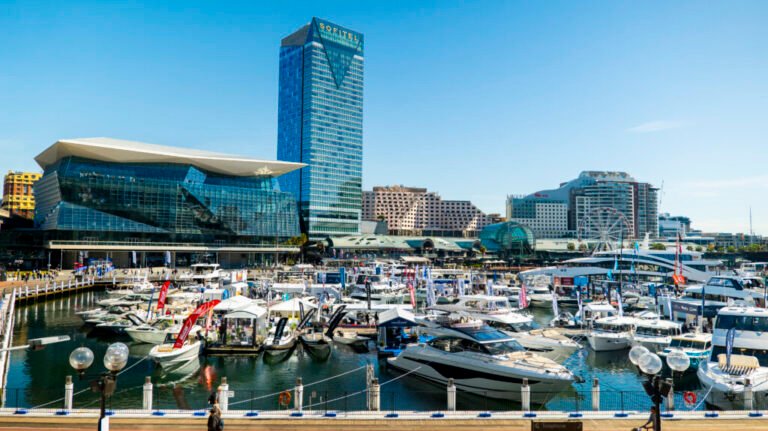The Australian marine industry is entering a normalisation phase following exceptional demand that surged from mid-2020 to early 2024, says GMBA representative Maryanne Edwards.
“Key manufacturers continue to hold strong forward orders, those with a diverse model range are better able to appeal to various levels of customer demand,” she says.
Australians are currently grappling with high interest rates, rising living costs, and limited wage growth, leading to increasing concerns over the growing wealth gap. There is a sentiment that businesses can no longer simply pass rising costs onto consumers indefinitely.
Despite this optimism, many businesses feel constrained by excessive red tape and bureaucratic hurdles that impede the refurbishment or expansion of facilities. Protracted approval processes for developing new infrastructure to meet contemporary market demands have become significant obstacles to growth.
“As sales in Australia return to a normalising phase following record highs, the reduction in demand is selective, influenced by factors beyond price, such as innovation and model size. The competitive marine export market faces ongoing challenges due to transportation costs and the tyranny of distance although the exchange rate has been favourable. While strong brands report sales are steady, new-to-market exporters face tougher challenges when competing with established supply chains.
“The superyacht sector continues to thrive, buoyed by considerable private investment in infrastructure and facilities. Additionally, areas such as cruising and chartering in Australia remain attractive, thanks to the stunning coastline, exceptional refit and maintenance facilities, clear waters, and favourable legislation.”

Do boat shows still have influence?
In response to the pandemic, many boat manufacturers have shifted their marketing strategies, reducing their participation in boat shows. “Instead, they are focusing on creating more meaningful experiences for potential and existing owners through targeted education initiatives, social events, and factory tours,” adds Edwards. “The cost of boat ownership in Australia has risen, leading to discussions about the industry’s approach to managing costs.”
Many businesses recognise the need to refine their own cost structures, optimise operations, explore technological improvements, and reassess supply chains, instead of continuously passing expenses onto customers.
Talent shortage in the marine sector is a global issue and has been highlighted by the Boating Industry Association in Australia. Many within the industry report difficulties in finding skilled staff with a strong work ethic and commitment. The talent pool remains limited, making it increasingly challenging to attract and retain qualified personnel.

New Zealand: expectations for turnaround
Like many countries, New Zealand (NZ) is experiencing high costs of living, but like Australia, the NZ brand is strong globally and sales continue to be steady.
A prominent presence at Metstrade showcased the resilience and expertise within the NZ industry with most exhibitors reporting a very positive show. The superyacht sector is seeing increased activity, no doubt buoyed by New Zealand’s impressive America’s Cup win.
“The industry is expecting a positive summer season,” says Edwards. “Increased enquiries have been noted in regards to cruising and chartering in New Zealand waters. Visiting superyachts (40 across three months to December 2024) and 400 cruising yachts is providing steady business for the industry. The industry is expecting a positive summer season and had a successful superyacht event in December attracting more than 250 owners, captains and crew. The revenue impact from superyacht visitation is a significant boost to the New Zealand economy.
“Marine NZ reports considerable interest in the Auckland Boat Show scheduled for March 2025 and states that declining interest rates is seeing a slow increase in sales of new boats. It is hoped the current government will put more of a focus on supporting businesses through removal of red tape and a continued strong focus on skills development.”
Read the latest news on the marine industry in New Zealand
The Benefits of Mindful Eating
Mindful eating is a practice that involves paying full attention to the experience of eating and drinking. It is a form of meditation that can help individuals develop a healthier relationship with food and their bodies. Here are some of the benefits of mindful eating:
1. Improved digestion: When we eat mindfully, we are fully present in the moment and can better listen to our body’s cues of hunger and fullness. This can help prevent overeating and improve digestion as we are more aware of when our body is satisfied.
2. Weight management: Mindful eating can also help with weight management as it encourages us to eat when we are hungry and stop when we are full. By paying attention to the taste, texture, and sensation of food, we are less likely to eat out of boredom or emotional reasons.
3. Increased enjoyment of food: By slowing down and savoring each bite, we can fully appreciate the flavors and textures of our food. This can lead to a greater sense of satisfaction and enjoyment during meals.
4. Reduced stress and anxiety: Mindful eating can also help reduce stress and anxiety by bringing our attention to the present moment. This can help us break free from negative thought patterns and focus on the nourishing experience of eating.
5. Better self-awareness: By paying attention to our eating habits, we can become more aware of our triggers for overeating or emotional eating. This can help us develop healthier coping mechanisms and make more mindful choices when it comes to food.
Overall, mindful eating is a powerful tool for improving our relationship with food and promoting overall well-being. By practicing mindfulness during meals, we can cultivate a greater sense of connection to our bodies and nourish ourselves in a more balanced and intentional way.

